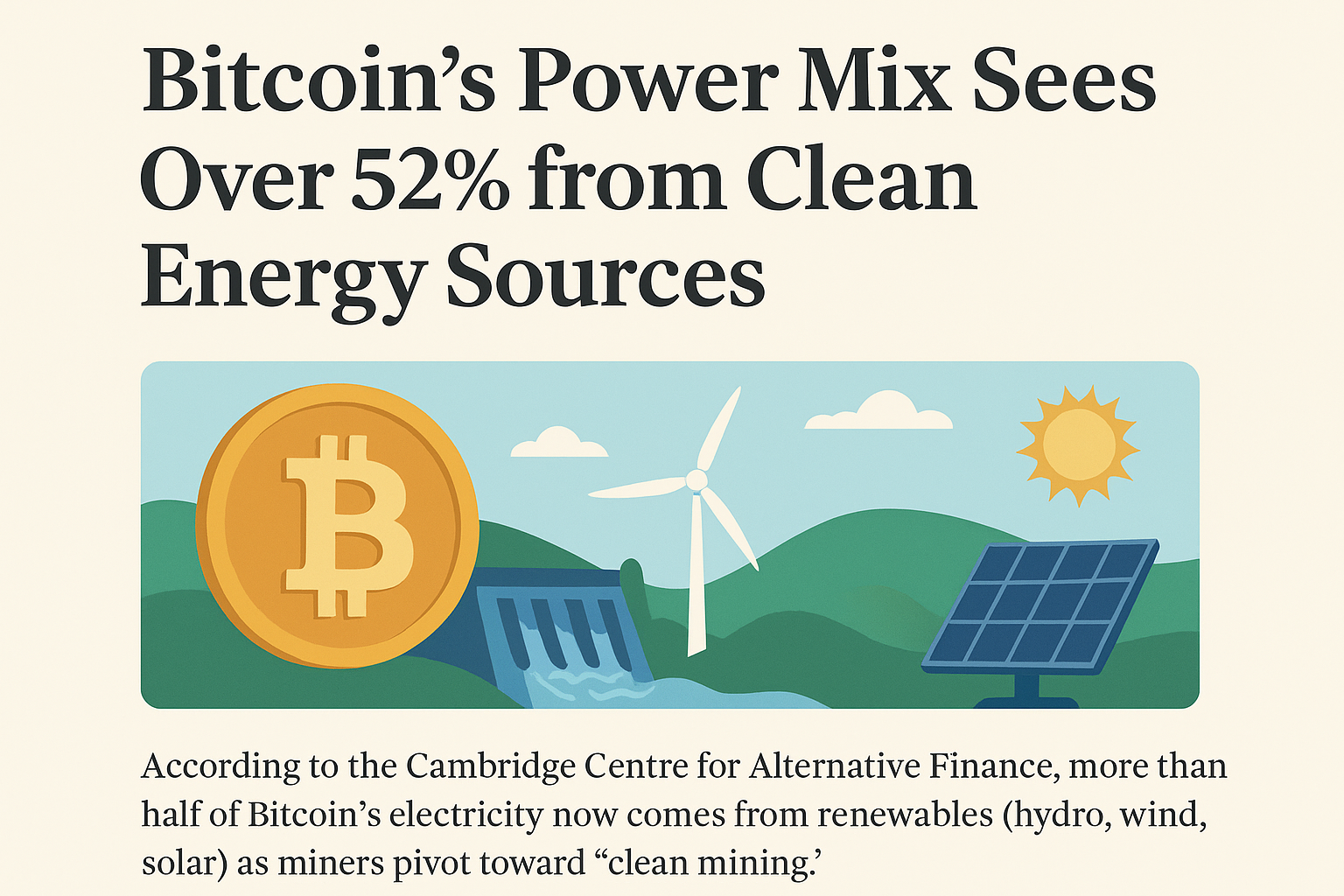In a remarkable shift for the world’s largest cryptocurrency network, Bitcoin’s energy landscape is undergoing a quiet but significant transformation. According to the latest report from the Cambridge Centre for Alternative Finance (CCAF), more than 52% of Bitcoin’s global electricity consumption now comes from renewable energy sources such as hydroelectric, wind, and solar power. This marks a milestone in Bitcoin’s long-debated relationship with energy use and environmental sustainability.
A Turning Point in Bitcoin Mining
For years, critics have pointed to Bitcoin’s energy consumption as a major environmental concern, often comparing it to that of entire nations. However, the narrative is beginning to shift as miners around the world pivot toward cleaner, cheaper, and more reliable renewable sources. The CCAF’s updated analysis reveals that the mining industry has evolved dramatically since the early days when fossil fuels dominated the hash rate.
Hydroelectric power now leads the way, particularly in regions such as Scandinavia, Canada, and parts of China, where abundant water resources make it possible to generate low-cost, renewable electricity. Wind and solar energy are catching up quickly, thanks to advancements in renewable infrastructure and the growing appeal of “green Bitcoin” — coins mined using sustainable energy.
The Rise of “Clean Mining”
This move toward renewables is not purely altruistic — it’s also economic. As fossil fuel prices remain volatile and regulatory scrutiny tightens, miners have strong incentives to seek out long-term, low-cost energy solutions. Renewable energy not only reduces carbon footprints but also provides more stable operational costs.
The term “clean mining” has gained traction within the industry, signaling a cultural and technological shift. Many new mining operations are being built next to renewable power plants or in regions where excess green energy is abundant and underutilized. For example, mining farms in Texas are tapping into surplus wind energy, while operations in Iceland rely entirely on geothermal and hydroelectric power.
Regulatory and Market Pressures
The push toward sustainability isn’t just market-driven. Governments and investors are increasingly pressuring companies to align with environmental, social, and governance (ESG) principles. Major institutional players — from asset managers to energy companies — now demand transparency and carbon accountability from Bitcoin miners.
In addition, carbon credits and clean energy certificates have emerged as tools for miners to offset emissions or prove their renewable credentials. These instruments are helping to formalize sustainability efforts within the crypto ecosystem.
Challenges Ahead
Despite the progress, challenges remain. Renewable energy availability varies significantly by region, and not all miners have access to affordable green power. Moreover, while renewable energy now represents a majority share, a considerable portion of Bitcoin’s network still relies on coal and natural gas — particularly in developing markets where infrastructure is limited.
Another challenge lies in transparency. Measuring the true energy mix of Bitcoin mining is complex due to the decentralized nature of the network and the lack of standardized reporting. While the CCAF’s data provides the best available estimate, continuous updates and on-chain verification methods will be essential for maintaining accuracy.
The Future of Sustainable Bitcoin
As Bitcoin continues to mature, the trend toward clean energy is likely to accelerate. Innovations such as off-grid mining, integration with power grid balancing systems, and the tokenization of carbon credits could make Bitcoin a powerful driver of renewable adoption worldwide.
Ultimately, this transformation challenges the long-standing perception of Bitcoin as an environmental villain. With over half of its energy now sourced from renewables, Bitcoin may soon become a surprising ally in the global transition toward sustainable energy — proof that even a decentralized network built for digital finance can evolve toward a greener future.




